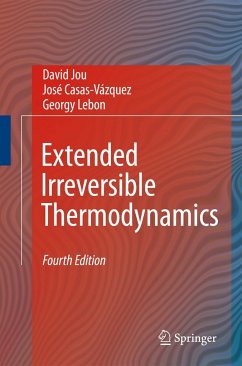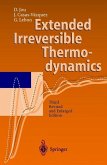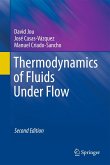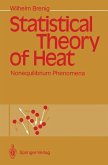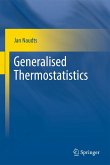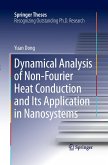The fast progress in many areas of research related to non-equilibrium ther- dynamics has prompted us to write a fourth edition of this book. Like in the previous editions, our main concern is to open the subject to the widest au- ence, including students, teachers, and researchers in physics, chemistry, engine- ing, biology, and materials sciences. Our objective is to present a general view on several open problems arising in non-equilibrium situations, and to afford a wide perspective of applications illustrating their practical outcomes and con- quences. A better comprehension of the foundations is generally correlated to an increase of the range of applications, implying mutual feedback and cross fert- ization. Truly, thermodynamic methods are widely used in many areas of science but, surprisingly, the active dynamism of thermodynamics as a ?eld on its own is not suf?ciently perceived outside a relatively reduced number of specialized researchers. Extended irreversible thermodynamics (EIT) goes beyond the classical f- malisms based on the local equilibrium hypothesis; it was also referred to in an earlier publication by the authors (Lebon et al. 1992) as a thermodynamics of the third type, as it provides a bridge between classical irreversible thermodynamics and rational thermodynamics, enlarging at the same time their respective range of application. The salient feature of the theory is that the ?uxes are incorporated into the set of basic variables.
From the reviews of the third edition:
"This is an excellent monograph presenting comprehensively the state-of-art in one of the fast developing branches of non-equilibrium thermodynamics. The name of the theory emphasizes the main idea exploiting in the description on non-equilibrium states, namely, the extension of classical thermodynamic state space by means of additional independent variables, such as heat flux, entropy flux, and so on. ... Three parts of the book include the general theory, microscopic foundation, and selected applications. ... recommended for using in advanced courses for graduate students." (Arkadi Berezovski, Zentralblatt MATH, Vol. 974, 2001)
"The book is an excellent introduction to the subject on which "several hundred'' papers have been published by many groups during the twenty years or so of its existence."
(P.T.Landsberg, Southampton, Zbl 0785.73002)
"This is an excellent monograph presenting comprehensively the state-of-art in one of the fast developing branches of non-equilibrium thermodynamics. The name of the theory emphasizes the main idea exploiting in the description on non-equilibrium states, namely, the extension of classical thermodynamic state space by means of additional independent variables, such as heat flux, entropy flux, and so on. ... Three parts of the book include the general theory, microscopic foundation, and selected applications. ... recommended for using in advanced courses for graduate students." (Arkadi Berezovski, Zentralblatt MATH, Vol. 974, 2001)
"The book is an excellent introduction to the subject on which "several hundred'' papers have been published by many groups during the twenty years or so of its existence."
(P.T.Landsberg, Southampton, Zbl 0785.73002)

